#3: ESOC, do you copy?
29 October 2015
For the past week and a half, the high bay, a large integration hall in the south side of the payload integration building (EPCU S5C), at the Centre Spatial Guyanais in Kourou has been buzzing with activities around the LISA Pathfinder spacecraft.
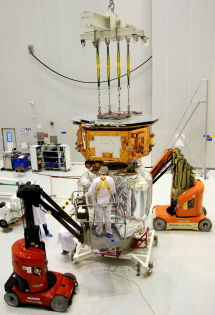 |
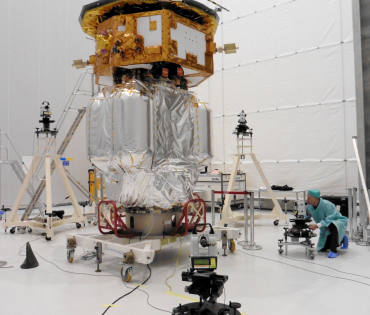 |
|
Fitting the clamp-band. Credit: ESA–F. Bertini |
Alignment tests on LISA Pathfinder. Credit: V. Lonnon |
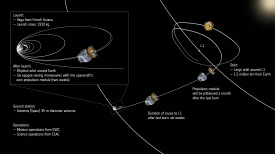 |
|
LISA Pathfinder's journey through space and separation of the two modules. Credit: ESA/ATG medialab |
After the installation of the flight clamp-band and the umbilical connectors between the science and the propulsion modules, measurements were taken to confirm that the alignment of the modules was still tight. These measurements are taken at various moments during the development of the spacecraft, so that we are confident that the alignment remained throughout the acoustic vibration tests performed at IABG, during transport to Kourou, and after the recent installation of the flight clamp-band. The next time that the propulsion and the science modules will change their current alignment will be about 50 days after launch, en route to LISA Pathfinder's operational orbit, when they separate from each other on command from ESOC, ESA's missions operation centre in Darmstadt, Germany.
With the alignments tests complete, we turned our attention to the application software running on the main spacecraft computer. Thanks to extensive testing during simulations of the operational scenarios at and by ESOC, some very minor glitches in the software were found and fixed. Well, the ESOC engineers enjoy a good challenge – at least during the simulation campaign – and they often deliberately inject failures, to sharpen up the skills of the operators who are working on the mission.
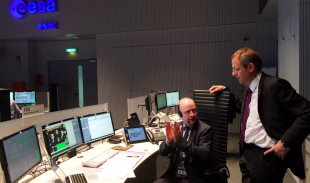 |
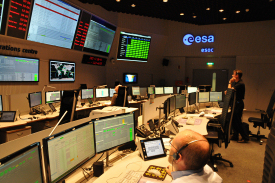 |
| ESA DG Jan Woerner visiting the LISA Pathfinder team at ESOC. Credit: ESA | LISA Pathfinder Flight Control Team during training. Credit: ESA - CC BY-SA IGO 3.0 |
Through these simulated anomalies, which sometimes resemble end-of-the-world scenarios, the robustness of the software can be improved. At the end of this process, the latest version of the application software was uploaded on the flight computer. All checks indicated that the upload was complete and coherent; the experts do this through a cyclic redundancy check, to rule out accidentally corrupted code during the upload. After all, we don't have the luxury of resorting to the Ctrl-Alt-Del key combination when LISA Pathfinder is in orbit!
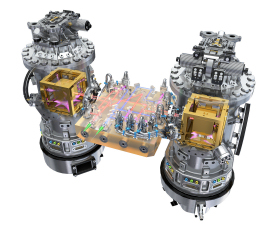 |
| The LISA Technology Package (LTP) core assembly. Credit: ESA/ATG medialab |
With the application software up and running, it was the turn for a final check on the on-board systems of both spacecraft and payload. We call this a spacecraft functional test, or SFT. For the test, the spacecraft is fully equipped, and is connected to the ground-segment equipment (EGSE) through the umbilical connectors. Among the many tests that were run, all electronics units were turned on and off, cabling and connectors were exercised, parameters of all units were confirmed, heaters and temperature sensors were monitored, interfaces with the LISA Technology Package (LTP) instrument were addressed, and the LTP instrument was also functionally tested.
One of the sub-systems being thoroughly tested was the transponder and the antennas (the radio equipment that allows ESOC to send commands to and receive data from the spacecraft when it is in the operational orbit, 1.5 million km away); after all we want to be reassured that the answer to ESOC's "do you copy?" will always be a resounding "yes".
All in all, about 32 different tests, all of which had also been conducted earlier on, before transport to Kourou, were carried out. These give us confidence that the system remains healthy and ready to go.
Alignment measurements, software upload, and functional tests are performed by Airbus Defence and Space test engineers, who operate the spacecraft from a side room of the high bay, called the LBC-4: they are at the coalface. The data are also relayed to other colleagues in Kourou and in Stevenage, UK; at ESTEC (ESA's test centre in the Netherlands); or at ESOC: they are the back office and quickly verify that the performance is as expected. When any test is finished, there is a check among all teams that all data were acquired, and that there were no anomalies, so that the campaign can continue to its next activity.
César García Marirrodriga
26 October 2015
Kourou, French Guiana






